MARIANI’S
Virtual Gourmet
August 20, 2017
NEWSLETTER
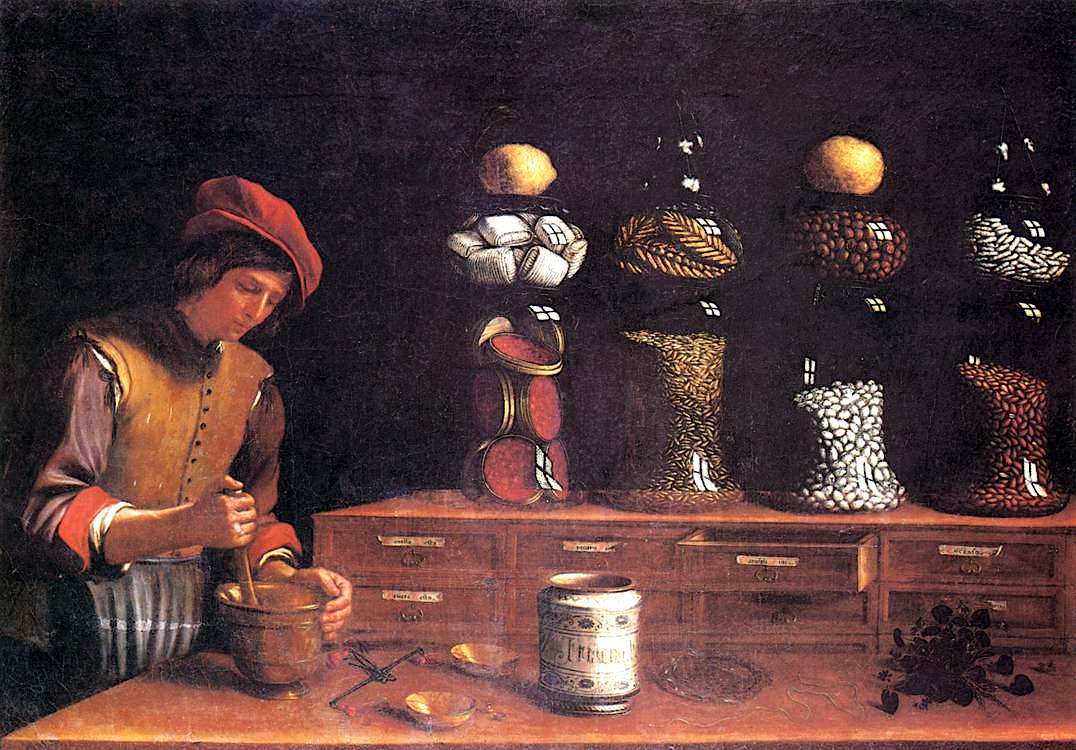
❖❖❖
IN THIS ISSUE
TEXAS BBQ QUEST,
Part Two
By John A. Curtas
NEW YORK CORNER
abcV
By John Mariani
NOTES FROM THE WINE CELLAR
LIVING MI SUEÑO IN NAPA VALLEY
By John Mariani
❖❖❖
TEXAS BBQ QUEST,
Part Two
By John A. Curtas
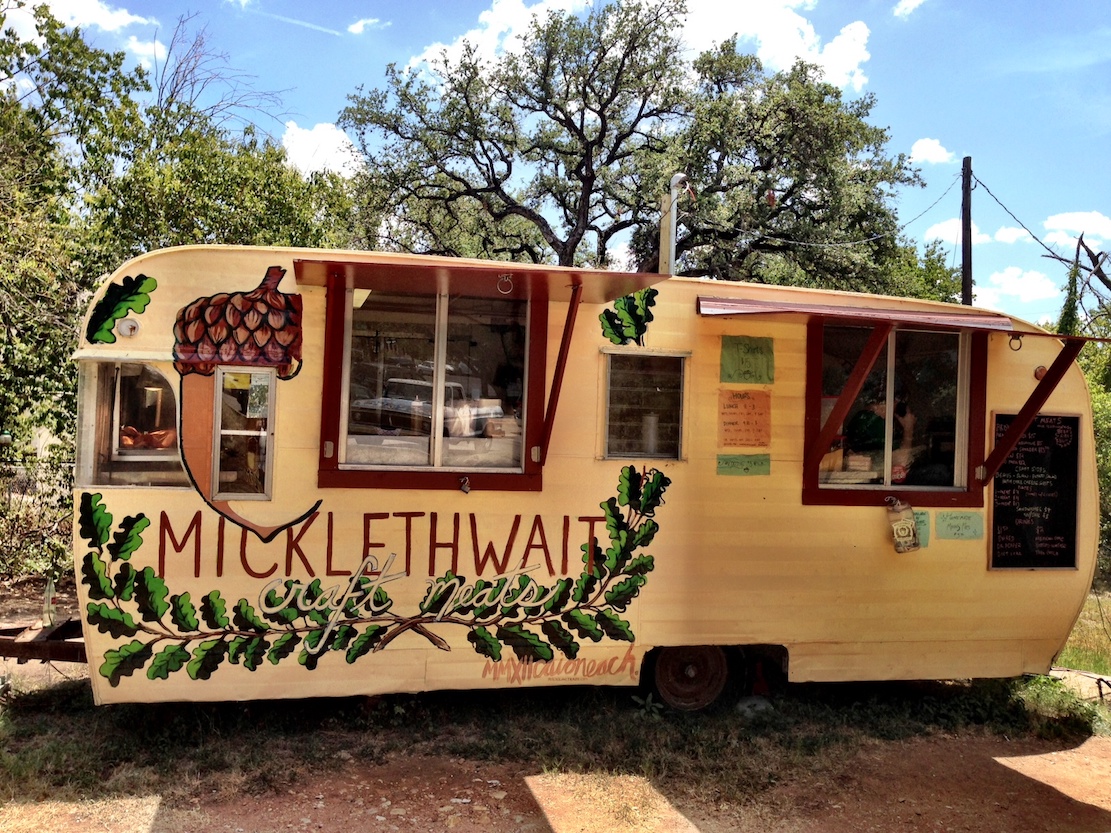
Barbecue
is the great equalizer. It's the only American
food that inspires $70,000 cars to line up next to
$700 trucks to get the good stuff. It is also the
only food that can inspire yours truly to hit the
road at 7 a.m. to make a one-hour drive to a speck
of a town called Lexington, Texas, to have
barbecue for breakfast. Even after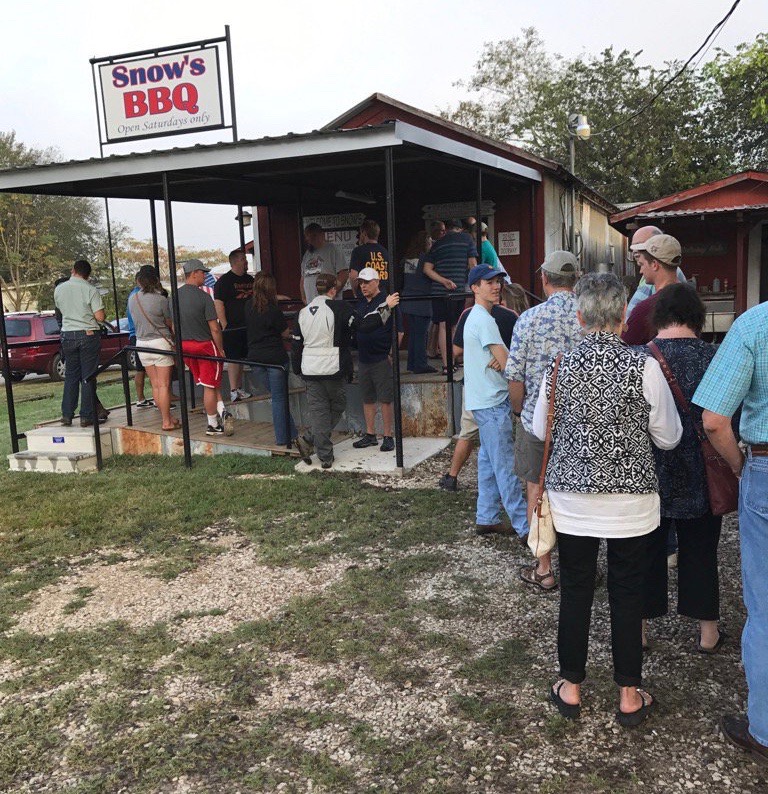 making that bleary-eyed
trek through foggy Central Texas flatlands, we
were still late to the party, a party that
commences but once a week at 8 a.m. at Snow’s. That
party goes on until the meat runs out (pretty
darn fast, usually around noon) so arriving
early is a must.
making that bleary-eyed
trek through foggy Central Texas flatlands, we
were still late to the party, a party that
commences but once a week at 8 a.m. at Snow’s. That
party goes on until the meat runs out (pretty
darn fast, usually around noon) so arriving
early is a must.
Snow's has been the place to get
Central Texas 'cue ever since both Texas Monthly and Calvin Trillin
proclaimed it the best Texas barbecue in the world.
Not bad for a joint that's
only been in business since 2003 and is only open
for four hours a week. If the holy grail of
barbecue is brisket, then Snow's obviously calls
on a higher power to achieve a heavenly bark and
out-of-this-world succulence. The ribs were so
smoky they should come with an FDA warning, and
the loose-packed, wrinkled-skin, jalapeño sausages
also stopped us in our tracks.
Making the pilgrimage to Snow’s is pretty
much a must for barbecue hounds these days, and if
there's a first among equals among Texas barbecue
hounds, it is Daniel Vaughn. As barbecue editor of Texas Monthly,
he spends most of his waking hours thinking and
writing about Texas ‘cue. And there he was, sitting
right across from us at Snow’s.
Forty-five minutes goes very
quickly when you're chewing the fat with someone
like Vaughn, and in between him stopping to do star
turns with
80-something pit mistress Miss Tootise Tomanetz, we got to quiz him on all
the media phenomenon
that has made Franklin's
in
Austin so of-the-moment,
where three-hour waits are common for a plate of 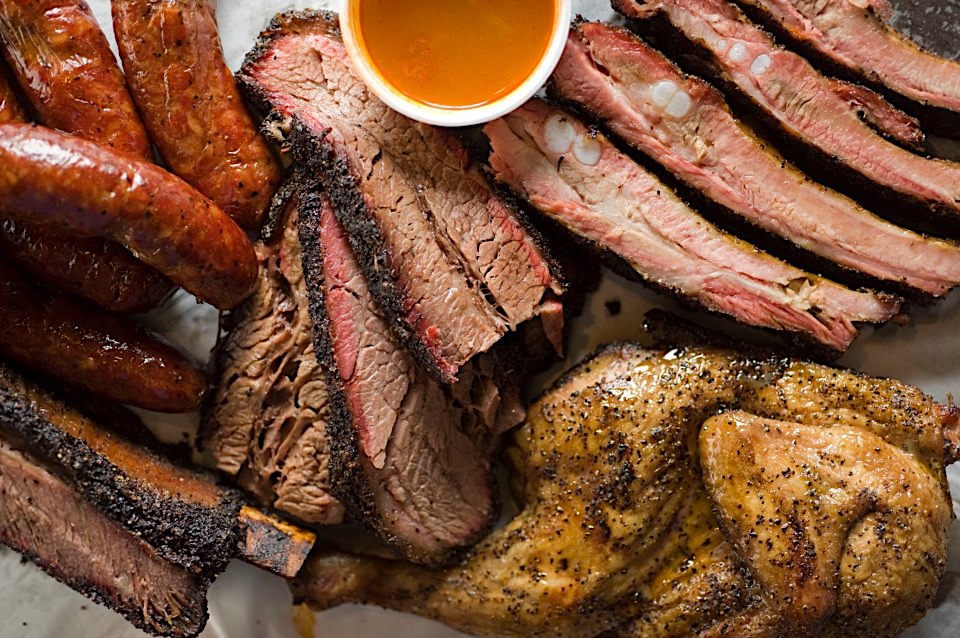 brisket, he had a ready
answer: "Aaron (Franklin) brought Central Texas
barbecue to the big city, and his biggest
contribution was making it consistent. When you go
there you always know you're going to get an
excellent brisket that's as good as the last time
you were there."
brisket, he had a ready
answer: "Aaron (Franklin) brought Central Texas
barbecue to the big city, and his biggest
contribution was making it consistent. When you go
there you always know you're going to get an
excellent brisket that's as good as the last time
you were there."
We both agreed that the rise of
social media has had a lot to do with Franklin’s
popularity ("FOMO - fear of missing out," he called
it), and that San Francisco (from where he had just
returned) is to barbecue what Tony Bennett is to
bull riding.
We finished at Snow’s around 9:30
and needed to reboot our digestive systems for our
next conquest, so the 40-minute drive over to Louie Mueller (right)—family
owned and operated since 1949—was the perfect
respite before our second barbecue breakfast.
Like Smitty's the day before,
Louie Mueller looks like a dump, or at the very
least a set with creaky screen doors, weathered
furniture, and old tractor signs on the walls from
an old black-and-white movie. But inside it is quite
pleasant, in a 1950s time warp sort of way. You
order at a counter and can joke around with the
staff and ask a lot of questions if you get there
before the line forms, which begins after 11 a.m.
LM
consistently ranks in the top five joints in the
state for good reason: It's historical, traditional,
and fantastic, more of a polished operation than
Smitty's or Snow's but every bit their equal when it
comes to top quality 'cue. You know it has to be
good when you find yourself salivating one hour
after polishing off a plate of Snow’s best.
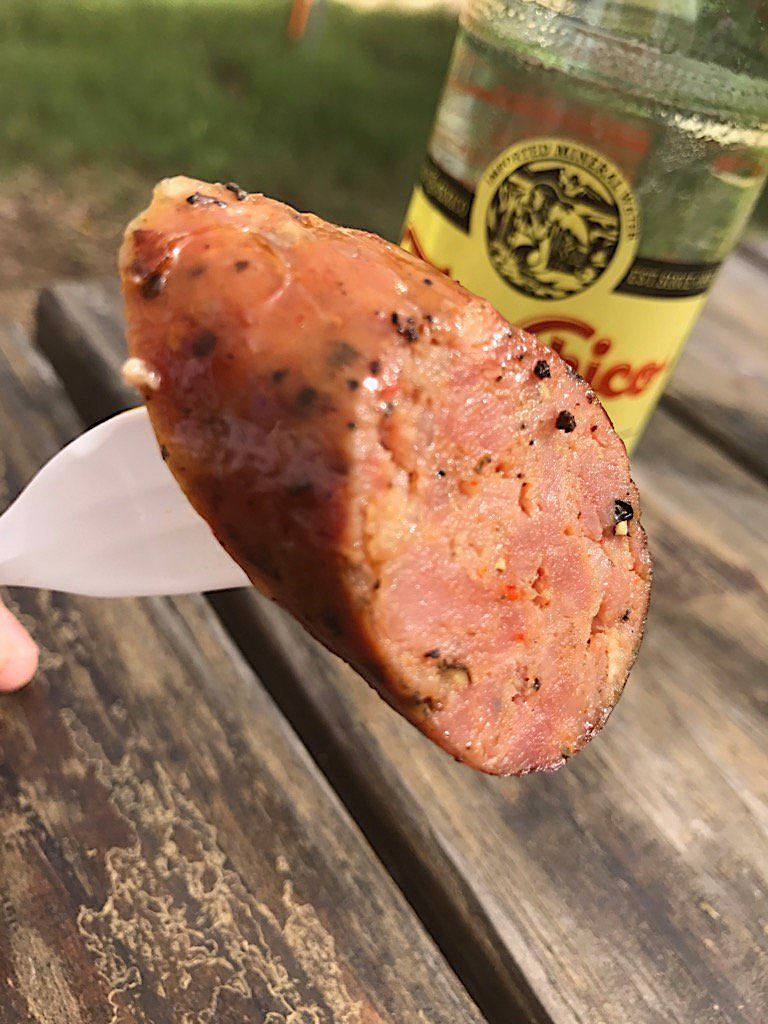 Many
things stood out about our second barbecue breakfast
-- the sweetness of the glazed ribs, the
in-your-face flavor of the house-made sausages, the
amazing peach cobbler and banana pudding, but
mostly I couldn’t get over how good the brisket
sandwich was. Crusty, smoky and moist, it pulled
apart with barely a nudge, and needed only a smidge
of stewed onions on top and a raw one with pickles
on the bottom to accentuate its beefiness. If ever
there was a piece of brisket that didn't need
barbecue sauce, this was it. Eat your heart out,
Kreuz.
Many
things stood out about our second barbecue breakfast
-- the sweetness of the glazed ribs, the
in-your-face flavor of the house-made sausages, the
amazing peach cobbler and banana pudding, but
mostly I couldn’t get over how good the brisket
sandwich was. Crusty, smoky and moist, it pulled
apart with barely a nudge, and needed only a smidge
of stewed onions on top and a raw one with pickles
on the bottom to accentuate its beefiness. If ever
there was a piece of brisket that didn't need
barbecue sauce, this was it. Eat your heart out,
Kreuz.
There
was plenty to love about Louie Mueller. Their
jalapeño barbecue sauce was the best of the trip,
and, if I had to pick a single barbecue restaurant
to eat in for the rest of my life, this would be
it.
The next day, we returned to Austin
proper for some citified ‘cue. Micklethwait
Craft Meats doesn't look like much, nothing
more than a barrel smoker and a trailer in a parking
lot. As with Franklin's (its competition down the
street), the line forms early. Unlike Franklin's
(which has gotten the whole Anthony Bourdain/Jon
Favreau treatment), the line is manageable. In
our case, we got there right when it opened, and as
with Snow's, it took us about 40 minutes to get our
plate of grub.
And
what a plate it was: wonderful poppy seed slaw,
first-rate pinto beans, ribs, brisket and sausage
that were all stellar. "It's more chef-y than many
other barbecue joints," one of our Texas 'cue
confidants had told us. And so it was. And so was
everything from the peppery sauce to a pecan pie
that was worth the wait all by itself. But what
really stood hoof and shoulders above the other cuts
was the kielbasa, a sausage of uncommonly good pork,
beef, spice, and cure of moderate, peppery
compaction (left).
It was the sausage of the trip, and a beautiful
expression of how a thoughtful chef can hew to
tradition and still improve upon it. About the only
disappointment at Micklethwait was the pulled pork,
which was mushy, poorly-pulled and bland. Word to
the wise: When you want a pulled pork sandwich in
Texas, 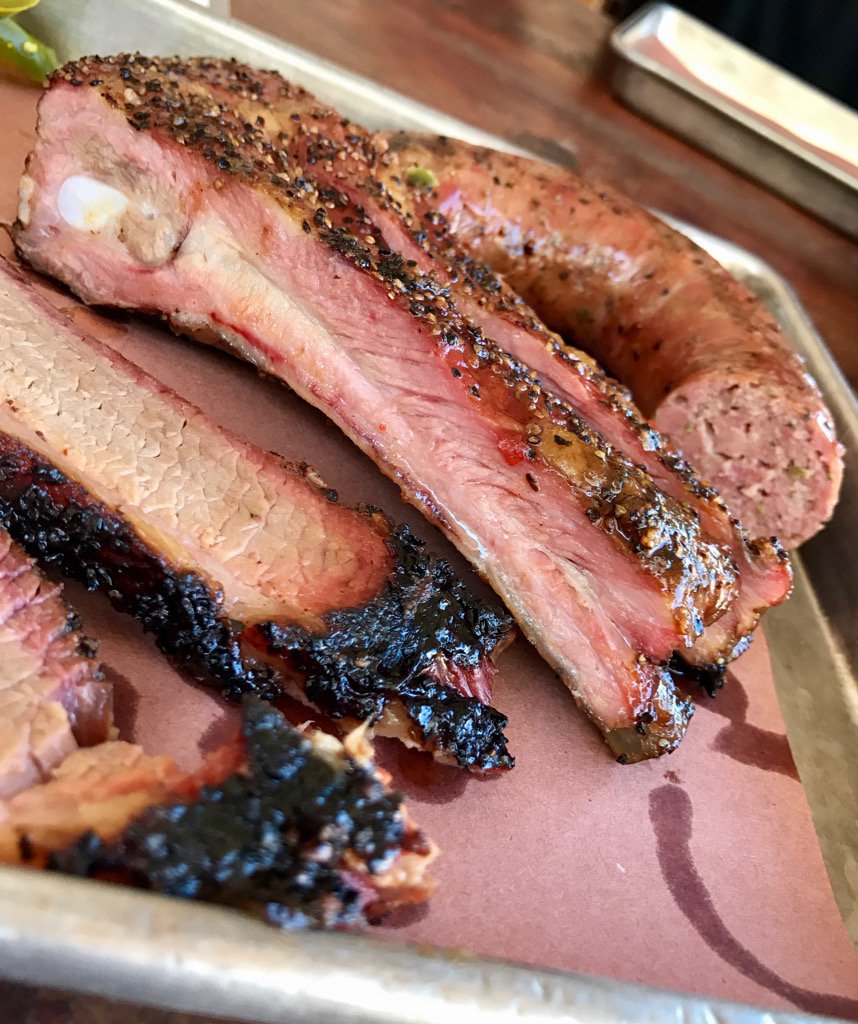 head to the Carolinas.
head to the Carolinas.
There
were no disappointments at our final stop, however.
Everything was just about
perfect at Freedmen’s.
The service was fast (it's more of a sit-down
restaurant, albeit one with picnic tables), the
food came quick (but was obviously sliced to
order), and they were playing old ‘60s rock
instead of one Willie Nelson tune after another,
which seems to be the mandatory soundtrack
everywhere else. It describes itself as a
laid-back lounge and beer garden serving barbecue
and retro-inspired cocktails, and that about sums
it up. We didn't partake of any libations but the
bar looked serious. The meats took a backseat to
none of our previous six places, and the ribs (right)
might've been the best overall for pure,
sweet-smoked porkiness. Freedmen's even smokes
their banana pudding, which is just about the
barbecue-i-est thing you can do.
The trouble with eating great barbecue is
that it spoils you for anything else. Smoked
meat is a tradition in Central Texas that has
morphed into a secular religion, in part because so
many people now want to worship at the altar of
artisanal foods that respect the ingredient, the
process and the history of what is being served.
Part of the resurgent popularity also, no doubt, is
due to the price: $30 gets two people a mountain of
food at any of these joints.
If
three days of meat immersion taught me one thing,
it's that it's impossible to make barbecue this
good—whether you're in Los Angles or Long
Island—unless you respect and learn from the
traditions that made it great. Austin's young guns
are doing this tradition proud, but the next time I
get a craving for Texas ‘cue, I’m heading for the
hills.
❖❖❖
By John Mariani
 abcV
abcV
38 E 19th Street (near Fifth Avenue)
212-475-5829
Readers
of this column know that I rarely write about
a restaurant I don’t like or one
that is not worth the effort. Why
waste the reader’s time?
The exception is when a
restaurant opened by a
celebrity chef whose prior efforts have been
stellar turns out to be
disappointing at best and dreary at worst. Thus will I attempt to
explain how restaurateur Jean-Georges
Vongerichten’s new abcV is in
every respect a second-rate effort, which is
doubly surprising because it is an
offshoot of his justly renowned ABC Cocina
nearby.
The
“V”
in the name means vegetarian/vegan, and
everything is true to the cause.
Now, I have no problem with vegetarians who eat
as they wish for a variety or reasons,
though vegans 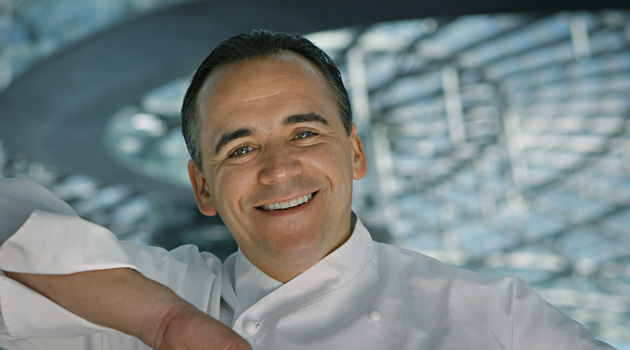 I find
always to be strident, polemical and too often
political
in their vexations. I have also in
the past praised highly vegetarian restaurants
for their creativity, the
essential flavors enhanced with seasonings and
spices, and the quality of the
ingredients, going back to Greens, the
pioneering vegetarian restaurant in San
Francisco opened by Deborah Madison in 1978. I remember how excited I was
by the soups and salads,
vegetable pastas and desserts.
Alas, none of that excitement is on the
plate at abcV.
I find
always to be strident, polemical and too often
political
in their vexations. I have also in
the past praised highly vegetarian restaurants
for their creativity, the
essential flavors enhanced with seasonings and
spices, and the quality of the
ingredients, going back to Greens, the
pioneering vegetarian restaurant in San
Francisco opened by Deborah Madison in 1978. I remember how excited I was
by the soups and salads,
vegetable pastas and desserts.
Alas, none of that excitement is on the
plate at abcV.
The
dining room itself is as white and sterile as a
hospital O.R. Everything but a
striped banquette is white, every surface hard,
so the decibel level is as
ear-rupturing as any in NYC, so, of course, the
already caterwauling New
Yorkers have to talk even louder to be head
above the din.
Behind a glass wall cooks are furiously
keeping up with yet another order of hummus.
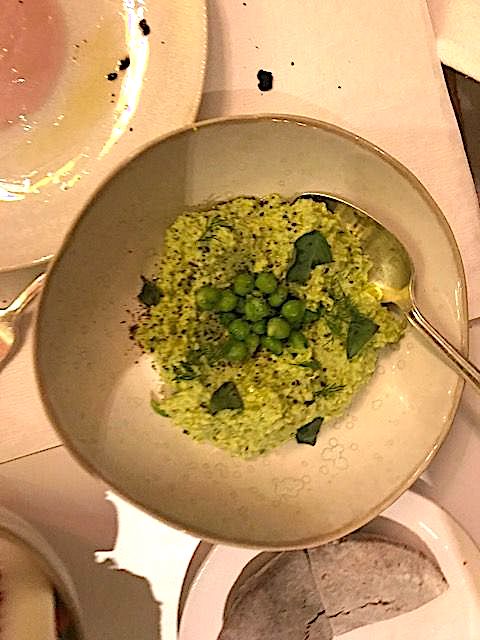 The
menu
is divided into “light and fresh,” “warm and
hot,” “noodles and rice,” “legumes”
and “dosa,” all small plates. The
green chickpea hummus (left) with Thai basil and
oddly colored pita bread ($15) was a
pleasant enough dish—most the ingredients here
are first-rate, with the
exception of insipid Australian truffles.
Slow roasted eight ball squash, coconut,
cashews and flowers with
“warming slices” ($18) had little flavor of any
kind. Charred zucchini baba
ghanoush with tomatoes was bland
and unattractively plated, not helped by chewy,
dry, gray pita bread triangles
($14). Avocado lettuce cups (below) were
little more than leaves of lettuce with bites
of avocado, cumin, and a little Serrano chile to
spice them up ($13).
The
menu
is divided into “light and fresh,” “warm and
hot,” “noodles and rice,” “legumes”
and “dosa,” all small plates. The
green chickpea hummus (left) with Thai basil and
oddly colored pita bread ($15) was a
pleasant enough dish—most the ingredients here
are first-rate, with the
exception of insipid Australian truffles.
Slow roasted eight ball squash, coconut,
cashews and flowers with
“warming slices” ($18) had little flavor of any
kind. Charred zucchini baba
ghanoush with tomatoes was bland
and unattractively plated, not helped by chewy,
dry, gray pita bread triangles
($14). Avocado lettuce cups (below) were
little more than leaves of lettuce with bites
of avocado, cumin, and a little Serrano chile to
spice them up ($13). 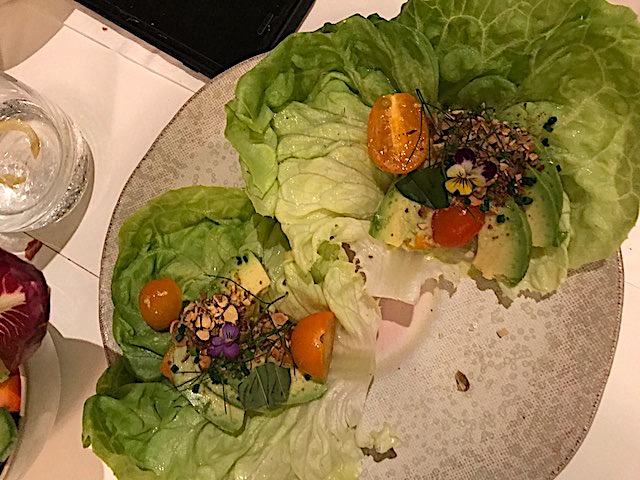
The pasta (of three listed) we tried was
disturbingly insipid: spinach spaghetti with
broccoli, the
omnipresent kale, preserved lemon, garlic,
Parmesan cheese, and saffron crumbs
($19) was overwrought and texturally
distasteful. A small bowl of coconut
sticky rice, with coconut sugar, combava
(a new name for kiwi lime) and
sea salt ($11) was nothing more than a lump of
gummy rice you’d get at as a side dish
in a take-out Chinese eatery.
A
single crisp Indian dosa
crȇpe costs
$8; add yogurt, avocado and sprouts and it
doubles in price.
Simply
reading the dessert list descriptions, with
items like vegan coconut custard
($13) and vegan matcha
crème brûlée
($11) dissuaded me from ordering them.
As
laudatory as I’ve been about so many of
Vongerichten’s enterprises—from his first
foray in Boston to his namesake restaurant at
Columbus Circle to the original
ABC itself, his expansion of his empire on what
seems like a weekly basis to
every continent has shown him to be more an
entrepreneur than a great
chef.
He has become not the
face but merely the name of his worldwide
restaurant company, for it is
obviously impossible for him to spend time in
all his 39 restaurants from here
to Shanghai.
He needs to roost
rather than just nod at what opens in his name
from now on.
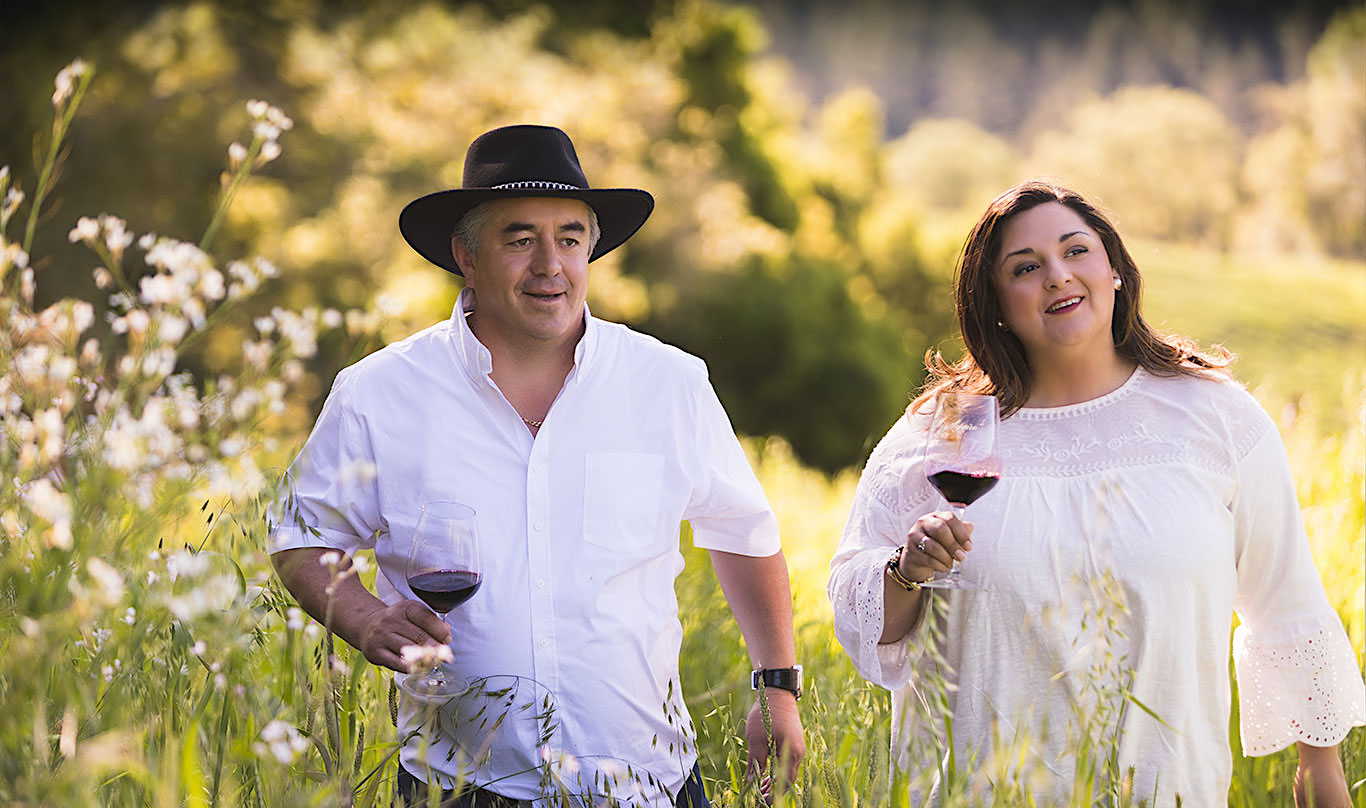
LIVING MI SUEÑO IN NAPA VALLEY
There are California wineries with names like Folie à Deux and Rubicon that suggest the idea of even starting one is a little crazy. But for Rolando and Lorena Herrera, naming their Napa Valley winery Mi Sueño—Spanish for "My Dream”—was as inevitable as their faith in their own abilities to achieve success in a very tough, very expensive venture.
Their dream is proudly an American Dream, for the Herreras certainly did not come from wealth. Rolando grew up in a rural area of Mexico, helping his grandparents work a six-acre farm they eventually had to sell to make ends meet. In 1975 the family moved to California’s Napa Valley, but moved back to Mexico after five years. When Rolando turned 15, he returned to Napa Valley and lived in a plant nursery while he finished high school, washing dishes at Cindy Pawlcyn's Mustards Grill and graduating to line cook.
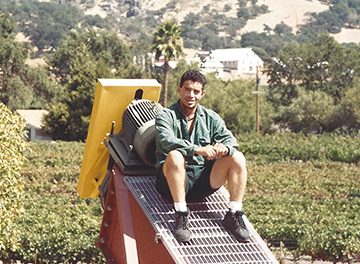 In 1985
Rolando met Warren
Winiarski, owner
of Stag's Leap
Wine Cellars, who hired him to break up rocks for a
stone wall around his
property, then later offered him an opportunity to
work the grape crush and help
out in the cellar. After three years, Rolando became
cellar master at the
winery, while taking courses on viticulture and
enology at Napa Valley College.
In 1985
Rolando met Warren
Winiarski, owner
of Stag's Leap
Wine Cellars, who hired him to break up rocks for a
stone wall around his
property, then later offered him an opportunity to
work the grape crush and help
out in the cellar. After three years, Rolando became
cellar master at the
winery, while taking courses on viticulture and
enology at Napa Valley College.It was still a long road from there to his own winery, with stops along the way as assistant winemaker at Château Potelle (left), winemaker at Vine Cliff, and director of winemaking of Paul Hobbs Wines. Then, in 1997, Rolando married Lorena—herself the daughter of migrant workers who bought land in California—and the couple launched their own winery, Mi Sueño Winery, as a side project. They also founded Herrera Vineyard Management in 2003 as a consulting firm and an ultra-premium label whose various wines were named after their six children—Perla Chardonnay ($70), Esmeralda Pinot Noir ($70), Victoria Malbec ($95), Valeria Petit Verdot ($95), Rolando Jr. Cabernet Sauvignon ($140) and Rebecca Cabernet Sauvignon ($140).
Today the Herreras control 40 acres in Oak Knoll, Coombsville, Los Carneros, Russian River Valley, and Sonoma Mountain. Last year they purchased a property on Mt. Veeder. Mi Sueño produces between 8,000 and 10,000 cases of wine per year, produced by 17 full-time employees. All wines are bottled unfined and unfiltered.
Over dinner at a Mexican restaurant in New York, I asked the Herreras what the most important element of running a premium winery is. Speaking as a man from a long line of Mexican farmers who knew how different every parcel of land was, whether to grow corn or pumpkins, Rolando insisted that a good vintner must first work with what Mother Nature provides, in order to grow and sustain the best grapes possible, with phenolic ripeness at the lowest brix in order to achieve balance.
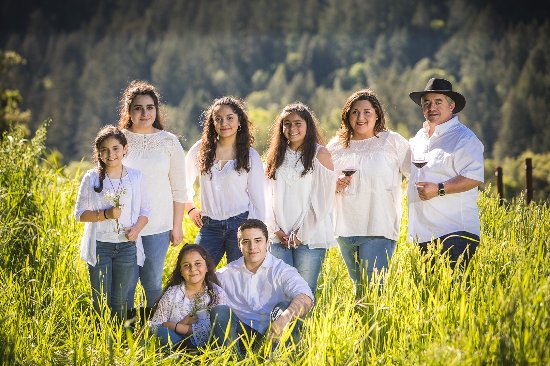
As the father of six children, Rolando compared viticulture to parenting, saying, “You have to be consistently present with your children to know what is going on in their lives. Even when you think you know them, they change. The same is true with growing grapes. Each growing season is different, and to be a good farmer, you must nurture and cultivate the fruit and spend as much time as possible in the vineyard. You have to be there. No growing season is the same, just like no stage in a child's life is the same."
Mi Sueño makes wines in various price ranges, some at the high end of California bottlings. The basic line includes Los Carneros
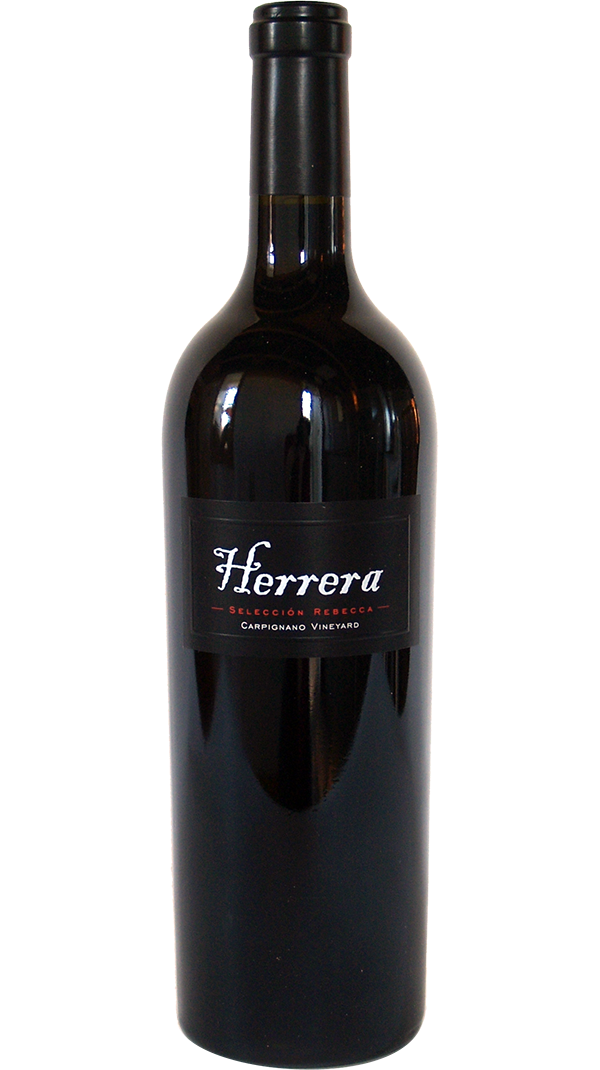 Chardonnay ($42), Sonoma Mountain
Chardonnay ($55), Los Carneros Pinot Noir
($42), Russian River Valley Pinot Noir ($55),
Cabernet Sauvignon ($75), Syrah
($55), Tempranillo ($55), and a red blend made of
primarily Cabernet Sauvignon
and Syrah, "El Llano" ($49).
Chardonnay ($42), Sonoma Mountain
Chardonnay ($55), Los Carneros Pinot Noir
($42), Russian River Valley Pinot Noir ($55),
Cabernet Sauvignon ($75), Syrah
($55), Tempranillo ($55), and a red blend made of
primarily Cabernet Sauvignon
and Syrah, "El Llano" ($49).The Herrerras make their wines unapologetically in the big, bold California style in which alcohol can work its way up to 14.6% in the Chardonnays, while the red wines stay at the reasonable 14.5%. The Chardonnay, particularly the 2013 Perla ($70), is a very lush wine, but some of that comes from the caramel flavors picked up from 32 months of aging in French oak, which you will definitely taste. I prefer the more subtle 2014 Los Carneros ($42), which spends only 10 months in barrel, so that even at 14.5% alcohol its richness is in better acidic balance and the fruit is not as pronounced.
Of the red wines I tasted the 2013 Rebecca Cabernet Sauvignon ($138) was my favorite, and it compares well with a lot of the most prestigious California Cabs at that price. The fruit is a boon to this wine, for after 22 months in 100% French oak the tannins began to be tamed. Only 115 cases were made and are available through allocation only.
So the Herrera story is inspiring, not solely because these immigrants, like so many who came to America to follow their dream, have succeeded so admirably, but also because the results are as impressive as others’ who began with much more money and much more doubt.
❖❖❖
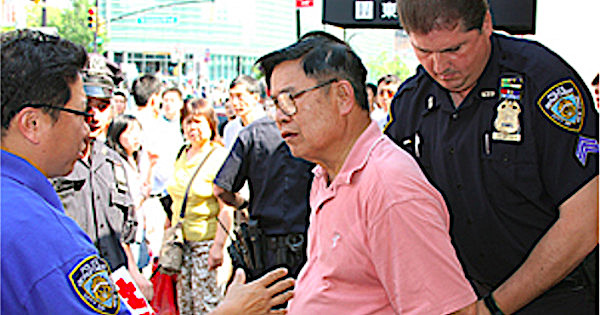 LET'S JUST TRY TO IMAGINE
WHAT'S
LET'S JUST TRY TO IMAGINE
WHAT'S
IN THE OTHER GUY'S HOT DOGS!
Xi
Ping Chow (left)
was arrested by the NYPD after being informed that the
man was making his hot dogs with the meat of stray dogs
in the area, possibly from dead dogs in dumpsters
of the Animal Care Centers all over the city.
Chow’s wife, Hu-Wen Zhao, insisted a rival hot dog stand
owner on the other side of the street conspired against
her husband to shut down his business, saying, “He always jealous
because my husband’s hot dogs taste better, people
always come buy Chow Chow hot dogs.”
ASSUMING YOU
HAVE A COLD,
DARK SOUL 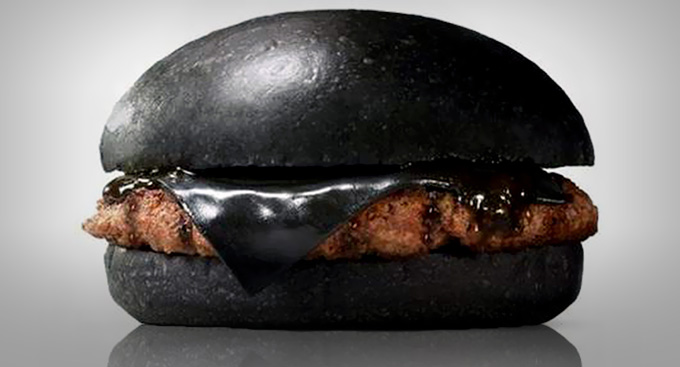
“If
you’ve taken a peek through Instagram recently, one
thing is clear: Black food is everywhere. Perhaps a goth
response to the ubiquity of unicorn lattes and rainbow bagels, dyeing
foods a deep, inky black has become one of the year’s
biggest food trends. Activated charcoal, the ingredient
that creates this ‘super-black' hue, has made its way
into coconut ash ice cream, detoxifying lemonades, pizza crusts, and boozy cocktails that are as black as your cold, dark
soul.”--Amy McCarthy, "Everything You Need to Know About
Eating Activated Charcoal," Eater.com.
Any of John Mariani's books below may be ordered from amazon.com.
 The
Hound in Heaven (21st Century Lion Books)
is a novella, and for anyone who loves dogs,
Christmas, romance, inspiration, even the supernatural, I
hope you'll find this to be a treasured favorite.
The story concerns how, after a New England teacher,
his wife and their two daughters adopt a stray puppy found
in their barn in northern Maine, their lives seem full of
promise. But when tragedy strikes, their wonderful dog
Lazarus and the spirit of Christmas are the only things
that may bring his master back from the edge of
despair.
The
Hound in Heaven (21st Century Lion Books)
is a novella, and for anyone who loves dogs,
Christmas, romance, inspiration, even the supernatural, I
hope you'll find this to be a treasured favorite.
The story concerns how, after a New England teacher,
his wife and their two daughters adopt a stray puppy found
in their barn in northern Maine, their lives seem full of
promise. But when tragedy strikes, their wonderful dog
Lazarus and the spirit of Christmas are the only things
that may bring his master back from the edge of
despair. WATCH THE VIDEO!
“What a huge surprise turn this story took! I was completely stunned! I truly enjoyed this book and its message.” – Actress Ali MacGraw
“He had me at Page One. The amount of heart, human insight, soul searching, and deft literary strength that John Mariani pours into this airtight novella is vertigo-inducing. Perhaps ‘wow’ would be the best comment.” – James Dalessandro, author of Bohemian Heart and 1906.
“John Mariani’s Hound in Heaven starts with a well-painted portrayal of an American family, along with the requisite dog. A surprise event flips the action of the novel and captures us for a voyage leading to a hopeful and heart-warming message. A page turning, one sitting read, it’s the perfect antidote for the winter and promotion of holiday celebration.” – Ann Pearlman, author of The Christmas Cookie Club and A Gift for my Sister.
“John Mariani’s concise, achingly beautiful novella pulls a literary rabbit out of a hat – a mash-up of the cosmic and the intimate, the tragic and the heart-warming – a Christmas tale for all ages, and all faiths. Read it to your children, read it to yourself… but read it. Early and often. Highly recommended.” – Jay Bonansinga, New York Times bestselling author of Pinkerton’s War, The Sinking of The Eastland, and The Walking Dead: The Road To Woodbury.
“Amazing things happen when you open your heart to an animal. The Hound in Heaven delivers a powerful story of healing that is forged in the spiritual relationship between a man and his best friend. The book brings a message of hope that can enrich our images of family, love, and loss.” – Dr. Barbara Royal, author of The Royal Treatment.
 |
The Encyclopedia of American Food and Drink by John F. Mariani (Bloomsbury USA, $35) Modesty forbids me to praise my own new book, but let me proudly say that it is an extensive revision of the 4th edition that appeared more than a decade ago, before locavores, molecular cuisine, modernist cuisine, the Food Network and so much more, now included. Word origins have been completely updated, as have per capita consumption and production stats. Most important, for the first time since publication in the 1980s, the book includes more than 100 biographies of Americans who have changed the way we cook, eat and drink -- from Fannie Farmer and Julia Child to Robert Mondavi and Thomas Keller. "This book is amazing! It has entries for everything from `abalone' to `zwieback,' plus more than 500 recipes for classic American dishes and drinks."--Devra First, The Boston Globe. "Much needed in any kitchen library."--Bon Appetit. |
"Eating Italian will never be the same after reading John Mariani's entertaining and savory gastronomical history of the cuisine of Italy and how it won over appetites worldwide. . . . This book is such a tasteful narrative that it will literally make you hungry for Italian food and arouse your appetite for gastronomical history."--Don Oldenburg, USA Today. "Italian
restaurants--some good, some glitzy--far
outnumber their French rivals. Many of
these establishments are zestfully described
in How Italian Food Conquered the World, an
entertaining and fact-filled chronicle by
food-and-wine correspondent John F.
Mariani."--Aram Bakshian Jr., Wall Street
Journal.
"Equal parts
history, sociology, gastronomy, and just
plain fun, How Italian Food Conquered the
World tells the captivating and delicious
story of the (let's face it) everybody's
favorite cuisine with clarity, verve and
more than one surprise."--Colman Andrews,
editorial director of The Daily
Meal.com. "A fantastic and fascinating
read, covering everything from the influence
of Venice's spice trade to the impact of
Italian immigrants in America and the
evolution of alta cucina. This book will
serve as a terrific resource to anyone
interested in the real story of Italian
food."--Mary Ann Esposito, host of PBS-TV's
Ciao
Italia. "John Mariani has written the
definitive history of how Italians won their
way into our hearts, minds, and
stomachs. It's a story of pleasure over
pomp and taste over technique."--Danny Meyer,
owner of NYC restaurants Union Square
Cafe, The Modern, and Maialino.
|
 |
 |
 |
 |
 |
 |
 |
 |
 Everett Potter's Travel Report:
Everett Potter's Travel Report: 
 Eating Las Vegas
JOHN CURTAS has been covering the Las Vegas
food and restaurant scene since 1995. He is
the co-author of EATING LAS VEGAS – The 50
Essential Restaurants (as well as
the author of the Eating Las Vegas web site: www.eatinglasvegas.
He can also be seen every Friday morning as
the “resident foodie” for Wake Up With the
Wagners on KSNV TV (NBC) Channel 3 in
Las Vegas.
Eating Las Vegas
JOHN CURTAS has been covering the Las Vegas
food and restaurant scene since 1995. He is
the co-author of EATING LAS VEGAS – The 50
Essential Restaurants (as well as
the author of the Eating Las Vegas web site: www.eatinglasvegas.
He can also be seen every Friday morning as
the “resident foodie” for Wake Up With the
Wagners on KSNV TV (NBC) Channel 3 in
Las Vegas.

MARIANI'S VIRTUAL GOURMET
NEWSLETTER is published weekly. Editor/Publisher: John
Mariani.
Editor: Walter Bagley. Contributing Writers: Christopher Mariani,
Robert Mariani, Misha Mariani, John A. Curtas, Geoff Kalish, Mort
Hochstein, and
Brian Freedman. Contributing Photographer: Galina
Dargery. Technical Advisor: Gerry McLoughlin.
To un-subscribe from this newsletter,click here.
© copyright John Mariani 2017

